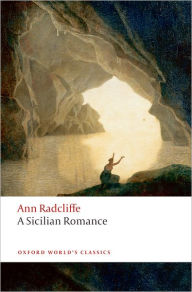Elmore Leonard, a literary icon praised by The New York Times Book Review as "the greatest crime writer of our time, perhaps ever," has captured the imagination of millions of readers with his more than three dozen books.
In this short fiction collection, Leonard demonstrates the superb characterizations, dead-on dialogue, vivid atmosphere, and driving plots that have made him a household name -- and once again illustrates that the line between the law and the lawbreakers is not as firm as we might think.
Federal marshal Karen Sisco, from the bestselling novel Out of Sight, returns in "Karen Makes Out," once again inadvertently mixing pleasure with business. In "Fire in the Hole," Raylan Givens, last seen in Riding the Rap and Pronto, meets up with an old friend, but they're now on different sides of the law. In the title story, "When the Women Come Out to Dance," Mrs. Mahmood gets more than she bargains for when she conspires with her maid to end her unhappy marriage.
All nine stories are Elmore Leonard at his vivid, hilarious, and unfailingly human best.
Read More
People
If Leonard were a new kid instead of a past master, this fiction collection would make his name.
USA Today
Elmore Leonard’s 39th book ...finds one of America’s most accomplished novelists presenting his most accomplished female characters in years.
People Magazine
"If Leonard were a new kid instead of a past master, this fiction collection would make his name."
The New York Times has called Elmore Leonard "the greatest crime writer of our time, perhaps ever." Of course, there's much more to his writing than just crime, and there's no better way to show the broad range of this author's talents than with a collection. It offers variety for diehard fans and is a great sampler for readers who've been looking for the best place to start.
In When the Women Come Out to Dance, you'll find terrific crime stories (of course) that offer perspectives from both sides of the law, plus baseball, a western, and more. In all, there are nine stories, some short and some long, some contemporary and some historical, each showcasing this talented author's understanding of human foibles and of the ways they can blur the line between right and wrong. These stories have never been collected before in one volume, and the title story, "When the Women Come Out to Dance," is brand new.
Leonard writes about arson in "Sparks," aging in "Hanging out at the Buena Vista," and baseball in "Chickasaw Charlie Hoke." Conspiracy to murder offers a permanent solution to an unhappy marriage in "When the Women Come Out to Dance." Raylan Givens (from Riding the Rap and Pronto) sees a new side to an old friend in "Fire in the Hole," while federal marshal Karen Sisco (from Leonard's bestselling novel Out of Sight) mixes business with pleasure in "Karen Makes Out." The past offers a backdrop in "Hurrah for Capt. Early" and "The Tonto Woman," and life, death, and the movie business get a workout in "Tenkiller."
Whether writing humorously or poignantly, in action-packed episodes or laid-back descriptions, Leonard's remarkable talent rings true in every detail of this excellent collection. Sue Stone
Library Journal
Never mind the official pub date; there's a one-day laydown on November 19. Copyright 2002 Cahners Business Information.
Kirkus Reviews
Rummaging through Leonard's attic via these nine stories revives some fond memories and turns up a couple of forgotten treasures. Though half the volume is devoted to two novellas, the shorter pieces are the best, their characters racing against time-literally so in "Hanging Out at the Buena Vista," a tour de force that demonstrates why mating rituals among the elderly are so abbreviated-to dive into the sparring matches they live for. The title story, which pairs a woman who wishes her husband would die with another whose husband already has, offers a model of Leonard's slanting dialogue, with every sentence charged with overtones that send their relationship hurtling toward a final twist. "The Tonto Woman" recounts a rustler's determined courtship of a landowner's untouchable wife, and the equally erotically charged "Sparks" pits an insurance investigator against the only dweller in the Arroyo Verde to lose her house to a recent fire. Readers who want to see the prototype for Karen Sisco's Out of Sight (1996) or savor a quasi-postlude to the Spanish-American War yarn Cuba Libre (1998) or find out how Chickasaw Charlie Hoke got his job as Billy Darwin's celebrity host in Tishomingo Blues (2002) will all be satisfied. And the two longer entries-"Fire in the Hole," which follows former buddies respectively into the white supremacist movement and the US Marshals Service, and "Tenkiller," a second-chance romance for a rodeo rider turned Hollywood stunt man who's picked up considerable baggage along the way-are as generously plotted as most novels, even if they do sometimes get tangled in their spurs. Fresh evidence why it's a mistake to pigeonhole Leonard as a writer of westerns or crimenovels. Like his mentor, John D. McDonald, the man's interested in everybody who relishes a good fight, whether it's with sharp-tongued words or shotguns.
Read More
















